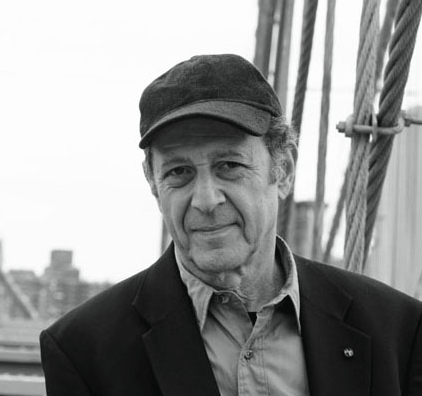Frost percussionists and friends fete Steve Reich’s 80th at Festival Miami
In the late 1960’s a group of composers, exasperated with the atonal scores that had pervaded conservatory campuses and new music concerts for nearly two decades, began searching for a new creative style. Rejecting neo-Romanticism as being backward rather than forward looking, they sought inspiration from popular culture and indigenous music of Africa and India. The result was the birth of minimalism which was based on the repetition of short, rhythmic motifs.
Steve Reich was one of the early leading lights of that movement. This past October Reich celebrated his 80th birthday and Festival Miami presented a program of Reich’s work Sunday evening in honor of the composer’s anniversary year.
Despite a rainy, chilly day, an eager audience was on hand at UM’s Gusman Concert Hall. That was not at all surprising. Reich’s music has always found an immediate connection with his audience. Unlike such later adherents as Phillip Glass or John Adams who have moved beyond the constraints of minimalism, Reich has proudly continued to write minimalist scores, albeit in a much more sophisticated manner. The Festival Miami program, curated by Frost School of Music percussion professor Svet Stoyanov, served as a fine primer on Reich’s growth as a working composer.
Stoyanov opened the concert with his own transcription for live percussion and prerecorded percussive instruments of an excerpt from Electric Counterpoint. Written in 1987 for jazz guitarist Pat Metheny , the score reflected the classically trained composer’s explorations of other musical idioms and an important early definition of Reich’s own distinctive creative voice. Electric Counterpoint‘s quasi-jazz rhythms are irresistible and Stoyanov demonstrated great dexterity in blending with and adding to his own taped soundtrack.
Reich’s Quartet for two pianos and percussion (2013) seems to come from another world. This is the work of a composer sure of his aesthetic and at the top of his game. In this piece the repetitive witting is mostly voiced in the keyboard lines while the mallet percussionists play more thematic material that intersects with the pianists’ underlying pulse. The central episode finds the mallet players striking chime-like chords on their instruments while the finale brings the percussionists to full tilt.
Like Reich’s Pulitzer Prize winning Double Sextet, this score is masterfully conceived. It is audience friendly but also intricate and complex. Lasting around 25 minutes, the work was filled with so much ear-catching invention that it seemed much shorter. Pianist Timo Andres and Vicky Chow gave strength to the important pianistic undertones while Ian David Rosenbaum and Stoyanov were on top of the sometimes angular mallet writing.
Drumming is a 1971 tour de force that, in no small way, put Reich on the map. Stoyanov, Rosenbaum, Ji Hye Jung and Matthew Duvall (percussionist of eighth blackbird) played the first part of the hour-long opus. Scored for bongos, each player takes a turn playing duos. Here Reich introduces ‘phasing’ which has become a signature of his compositional palette. The two players play a rhythmic section together; then one player goes slightly off the beat while continuing his part. The resulting blend is ingenious and a delight to the ear if it is executed properly by the musicians. At the conclusion of this Drumming excerpt, all four players play different patterns on the bongos, resulting in a racket that is wild, driven, relentless and highly musical all at once. All four players, top-notch new music specialists, seemed to blaze through this showpiece.
The concert concluded with Sextet for two keyboards and four percussionists. In this ambitious and transitional 1984 work, Reich is experimenting, attempting to expand his musical paint box while remaining true to his minimalist voice. In that respect its strengths and weakness resemble those of The Desert Music, the 1983 choral-orchestral score that New World Symphony and Seraphic Fire presented last season. At times the rhythmic beat and timbres of the mallet writing resembles the sound of a Caribbean steel band. The finale is like a jam session in sheer exuberance. Reich adds gong, two bass drums and electric keyboard (at times sounding like an organ) to his standard piano and mallet mix. The mallet players even rub violin bows against their instruments. Still the 25-minute time span can seem over extended. There is much tedious filler between the high spots. This is all part of Reich’s musical journey that has produced his outstanding recent scores.
The Mallet Quartet that was originally programmed was not performed. Stoyanov said that this concert of an hour and a half of music would ordinarily need a week or more of rehearsal but the players prepared it all in sessions on Friday and Saturday afternoon. At the conclusion of the program, they hugged each other in a display of mutual respect and appreciation.
Festival Miami continues with pianist Kevin Kenner playing an all Chopin program 4 p.m. Sunday at UM Gusman Concert Hall in Coral Gables. festivalmiami.org
Posted in Performances
Leave a Comment
Mon Jan 30, 2017
at 1:56 pm
No Comments







